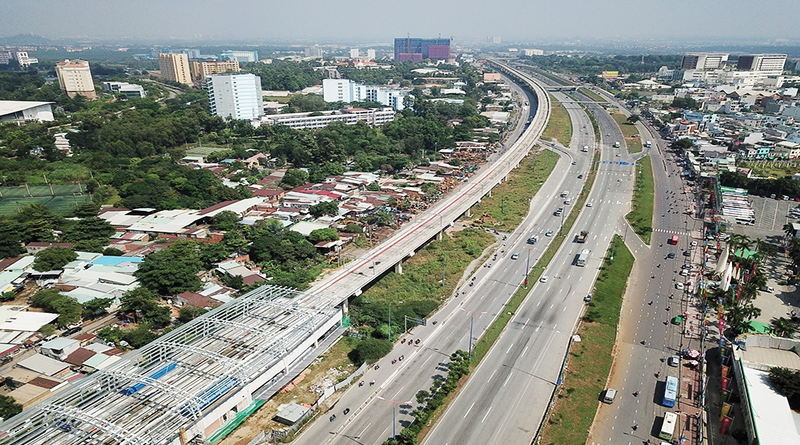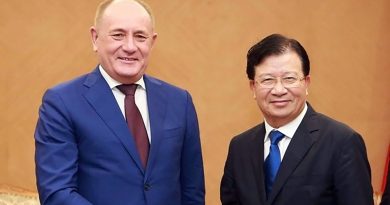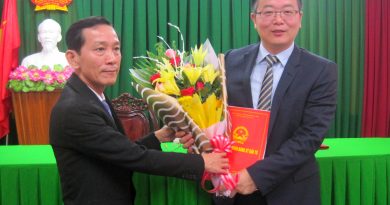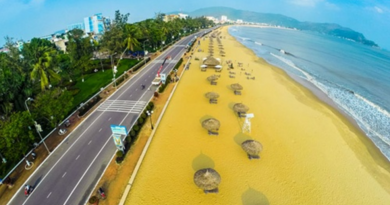East Ho Chi Minh City entices new investors
The recent green light for Ho Chi Minh City People’s Committee to set up an innovative hub in the east would make the so-called Vietnam Silicon Valley come to life and attract further investment into the city’s real estate market.
The proposed innovative city is expected to combine research and development centres, human resources training, and application of science and technology. The creation of this creative city is based on the idea of building a hi-tech and smart urban development zone for Ho Chi Minh City, the southern key economic region of the whole country, and for neighbouring regions.
The initiative, according to Ho Chi Minh City Party Secretary Nguyen Thien Nhan, will aid momentum to boost the economy of the whole region for the next decade, and is expected to contribute 30% of Ho Chi Minh City’s GDP, while becoming the nucleus of Industry 4.0 in Vietnam and deploying a smart urban hub.
According to designs proposed by Sasaki-enCity, this innovative hub will cover districts 2, 9, and Thu Duc.
Thu Duc district already has a high concentration of institutes, research centres, and four large universities with more than 10,000 lecturers, including more than 1,000 professors and doctors and 100,000 students.
District 2 is home to Thu Thiem New Urban Development Area – the second economic hub of Ho Chi Minh City and soon to become the new international financial centre of the city and the wider region.
Singaporean developer Keppel Land is also developing the Saigon Sports City venture in this district, which is applying innovative urban solutions including smart security and mobility, and environmental infrastructure solutions.
Meanwhile District 9 boasts Saigon Hi-tech Park, the second-largest such park in the country, covering more than 700 hectares and a base for 35,000 labourers. The park, with a total of $6 billion investment capital, is also home for Intel Products Vietnam – a leading overseas high-tech investor in the country.
Recently the east has become a new heart for Ho Chi Minh City with many large-scale infrastructure projects, from existing schemes such as Hanoi Expressway, Ho Chi Minh City-Long Thanh-Dau Giay, Metroline 1, the second ring road, and Mai Chi Tho Boulevard either under construction or in the pipeline.
Ho Chi Minh City People’s Committee said that approximately 70 per cent of the investment capital of the whole city for the last 10 years was allocated to the east, with 216 projects and the total investment capital of VND350 trillion ($12 billion).
In addition to that has been creation of a transport system to connect the area with neighbouring provinces, including ring roads 2 and 3 and various bridges to offer deeper connections.
In the neighbouring province of Dong Nai, the existing Ho Chi Minh City-Long Thanh-Dau Giay Expressway has also seen proposals to expand it into double lanes. This type of expressway would not only break through the traffic flow to the incoming Long Thanh International Airport but also reduce congestion from the west to city’s heart.
According to Nguyen Dinh Trung, chairman of Hung Thinh Corporation, the east of Ho Chi Minh City has become a golden location attracting real estate developers to meet the increasing demand of local residents. “This opportunity is open for all, from domestic and international investors to other local people,” Trung said.
Real estate prices in the east of Ho Chi Minh City have been increasing in recent years, especially in districts 2 and 9 where a doubling in price has been seen in the last two years alone.
Many other projects in this area are attracting interest from both investors and buyers, such as the Senturia Central Point project located next to Saigon Hi-tech Park in District 9, and the Vinhomes Grand Park where prices are continuing to rise.
In addition, land costs in the east’s neighbouring areas such as Nhon Trach and Bien Hoa city also increased by up to double compared to quotes from two years ago, up to approximately VND100 million ($4,300) per square metre in central areas.
Source: VIR







